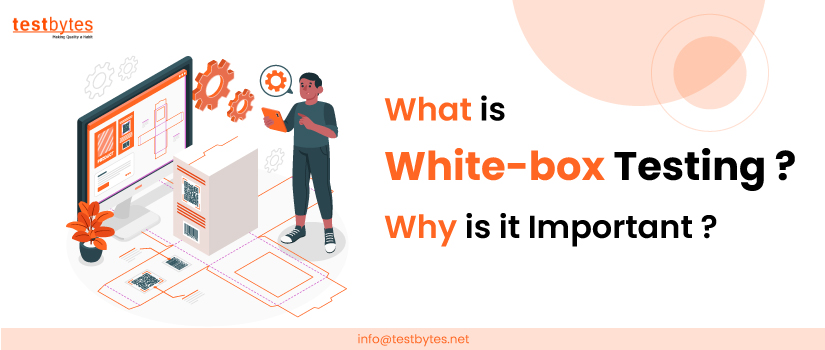
Database Testing: All Info you need to know!
October 16th, 2018

With the advancement of technologies, the complexity of computer application is going top-notch with a number of applications and Mobile operating systems.
On top of that, if the front end is developed in a complicated manner than you can only assume what will happen at the back end.
Hence, now is the time to drown in the knowledge of the database in order to come up with quality and secure databases.

What is Database Testing?
The database is becoming more and more complex over time owing to the humongous amount of data that’s been stored in a software system. Through Database basing process, we can evaluate the data integrity, data validity, database performance and functionalities wrapped around with it.
By performing the process maximum stability, efficiency, performance, and security of the database can be kept on a check from time to time to ensure that the software is stable once deployed in a competitive environment.
Types of Database Testing
Function and structure are what determines what type of testing has to be performed on a database system. On that basis of these factors, database testing can be further divided into

Structural database testing – Components of the database that are not visible to users have to be tested. For that, structural database testing can be used. Another benefit of this type of testing is that it can be used for the validation of the database.
Functional testing – There are a lot of functionalities associated with the database from a user perspective. White box and black box testing are the types of testing used for this purpose
Non-functional testing – Risk factor of the database, requirements, performance, etc. of the database has to put to test and that’s the non-functional factor of any database.
Database Testing Checklist
- Database synchronization
- Database performance
- Data integrity
- Data field validations
- Functionality
- Constraints
- Data transactions
- Database security
- Redundant data deletion
- Data consistency
- To check whether data does not go outside the table
- Data compatibility
- Data duplication check
- Data migration ability
- Backup and recovery
How to Do Database Testing Manually
Open the SQL server and then the query analyzer, write the query and retrieve the data. Compare that with the expected result. Update or remove data and see how the software application performs
To run the test there are a specific process involved, which includes,
- Set up the test environment
- Run the test
- validate the result with the expected one
- Report the findings to the stakeholders
Why Database Testing is Important?
1. Data Integrity
This will include the – Create, Retrieve, Update and Delete – CRUD operations, recent update or status or any of the value in the data that is shared or must be visible on a screen or form.

However, it is essential to take note that the value is not updated on-screen and the old value is the only one visible. Hence, you can take on your Database Test case to ensure to meet this point. It will include data checking points that might be in different places to check that they are the same consistently.
2. Data Mapping
While mapping out the data in any software, you need to understand that data keeps on moving from user interface (UI) to database backend and then move out all the way back to UI. The main aspects to keep in mind are:
- You need to check out all the field that are in the frontend and UI so that they can consistently map with the corresponding table in the database. All of the mapping information is mentioned in the document in details making it easy to understand.
- When front end action is performed in an application then the parallel CRUD will be involved at the back end. It is essential to test that actions performed are giving out the right results or not.
3. Rule Conformity
This point is entirely dependent on the complexity of the project. When the database has complexity then components will also be complex such as triggers, relational constraints, and stored procedures and so on. In such a case, tested need to keep a number of things in mind, especially SQL Queries that can help you to run the complexity easily.
4. Validation of ACID Properties
There are mainly four properties on which the performance of Database depends on
- Atomicity is for the passes and fails in a transaction. This rule is usually known as all-or-nothing.
- Consistency is the validation result of the whole transaction as per the databases.
- Isolation is the point in which you can run out multiple transactions at once. However, the result will be shown in a continuous manner one after another.
- Durability is the factor that shows that once the data is stored then no crash or power loss can eradicate it.
Steps by Step Process for Database Testing
The easiest way to run a database for almost all the applications is to follow up with simple essential points. However, the points might differ as per an application.
- Environment preparation
- Running essential test cases
- Checking out the final outcome
- As per the results, you need to check on the validation process
- Documentation of the whole results to give a report to stakeholders
When you are trying out to prepare the test cases, you will require a number of SQL Queries. In this context, the most used command for the DB table is “Select”. This is used for almost all the commands in a way –
Select * from <TABLENAME> where <CONDITION>
Other than this, DB uses mainly three commands to run a table.
- Data Definition Language – DDL – This command contains a number of ways to handle a table such as TRUNCATE, DROP, RENAME, ALTER, CREATE and so on.
- Data Manipulation Language – DML –This will have the statements that allow deletion, update, and addition in the record.
- Data Control Language – DCL –This control helps in providing authorization to an individual. It will allow them to access and manipulation to the table(s) and can easily revoke the command statements.
Revoke Syntax:
Revokeselect/update
on <TABLENAME>
from<id1, id2…idn>;
Grant Syntax:
Grant select/update
on <TABLENAME>
to <id1, id2…idn>;
Test Database
The Database Testing workouts with the few essential points that helps in getting the changes. Here are the points that must be followed to do Database testing easily
1. Queries Creation
In order to easily test the database, you need to have deep SQL knowledge and that too Data Manipulation Language.
Then, the internal database structure understanding is a must to test it. Once, this is done, then comes the CRUD operations of an application.
This will help in the verification of SQL query results. It is even possible to use write queries with the help of SQL Query Analyzer in order to retrieve efficient results.
Also Read : Stress Testing : Why Is It Important For Your Software?
This is the most efficient way to do Database Testing , especially for the complex applications. However, these are the only criteria otherwise it won’t be possible to easily test DB.
On the other hand, in case of complex DB, it can be impossible to write the queries by a tester.
Hence, the developers help them up to ensure that the results do not tamper. This will not only increase the performance of testing but also help with SQL skills.
2. Observe Data
If you are a SQL tester then you know the importance of going through every single table to verify the result with the help of CRUD operations.
However, it can be a daunting process when a database consists of multiple tables.
This simple thing is enough to tell you that it is difficult to perform DB testing or verifying data in volumes. Hence, while performing a test on the table, ensure that you have proper knowledge regarding the structure of the table.
3. Developer Query
As mentioned above, when you are performing a test on DB, you will require a number of queries that will use CRUD operations.
However, in certain cases, when you are verifying the data, it is possible that the execution is not done in a certain manner.
Then, you can take help from your developer who has more depth knowledge regarding the subject.

It is certainly an ideal choice for a tester to avoid as many issues as possible. However, there can be few errors such as semantically wrong query, unsatisfied results, etc.
When such case arises, the client asks the developers or team to eliminate the problem or will simply exclude the whole project.
4. Testing Tools
Since the technology is at the peak, there is a number of tools that are available in the market that can be used by a tester. However, here the main challenge that will be faced by a tester is to come with the best possible tool available in the market.
Components Of Database Testing
1. Transactions
The most common use of the database is done for the transaction process. In such case, ACID properties are the friend in disguise of the user. The most common statements that are used in such case are –
- BEGIN TRANSACTIONTRANSACTION#
- END TRANSACTIONTRANSACTION#
- ROLLBACK TRANSACTION#
- SELECT * FROM TABLENAME <Transaction table>
The rollback statement helps in keeping a table consistent.
Also Read : Top 10 Game Testing Companies In India
2. Database Schema
You don’t have to be confused due to the term. It is just used to explain the working of data in a DB and its organization. Total of two ways are followed up to test such condition
- Database operators– You will require:
- Primary Key
- Foreign Key
- Field Name
- Constraint Field Value
- Tools Relevance – The tools will work as per the requirement.
- SchemaCrawler
- Validate the schema with a Query such as DESC<TABLENAME>
- Regular expressions
3. Triggers
This trigger helps in the execution of a complete table independently in order to record the outcome. All you need to do at the end is to compare the complete result.
These type of tests are done in two ways such as:
- Black-Box Testing
- White-Box Testing
Both the testing have their own technique and sets of rules that help in getting to the accurate outcome.
4. Stored Procedure
If you are familiar with user-defined function then you won’t take much time to understand it. The whole system works in coming up with the most reliable and accurate outcome.
All the processes can be invoked with the execute procedure or call procedure to obtain the output. This system is used for a number of applications where data is stored in RDBMS.
5. Field Constraints
The whole system works on the unique value, default value and foreign key.
All you need to get a hang off is SQL query to validate output and performing an operation on the frontend to ensure that the object condition in the database is exercised.
This is almost everything that you must know before starting with Database testing. If you are well informed then you are good to go.
What are the Database Testing Challenges? What’s the solution?
- Test data creation and re-usability of data again for testing
Solution: the only way to avoid such data issues is to plan well ahead and create all the required data for all the iterations at a stretch and then use this data judiciously.
- Testing huge data and production replicated database
Solution: While it is good to test in a production-like environment, it can sometimes become very challenging as well as time-consuming to test on huge data. The best solution would thus be a scaled-down or optimized database that is as close as possible to the production data set.
- Frequently changing the database structure
Solution: This is one of the most frequently faced challenges by the DB testers. They would have to create the test cases and the SQL queries based on the certain structure that gets changed at the time of execution or during any other retesting. The best approach here would be to anticipate the changes and the impact as early as possible, so we can avoid the last-minute delays.
- Isolation of data and queries
Solution: All the queries need to be isolated from each other, such as the input data and results of one query do not alter the results of another query.
- Unwanted data modification
Solution: Access control is the best way to avoid unwanted changes in the database. Only a limited number of people should be given access to make the changes. The edit/delete access should be restricted.
- Cost and time taken to get the data from a huge database
Solution: Quality comes at a cost; hence it is important to strike a balance between the expected quality, project timelines, expected data load, and other factors. These need to be indicated in the test strategy as well.
How automation can help in Database Testing
Automation testing helps in reducing redundant and repetitive manual work. This helps the testers to concentrate more on business-critical functionalities. This is true even for database testing. Here are some cases where automation can be a real life-saver.
- New or frequently changing applications
Agile is the new buzz word. You will have a new release to production at the end of every sprint. This also means a complete round of testing every 2-3 weeks. By automating functionalities that are completely stable and unchanged in the recent sprint, you will be able to concentrate your efforts on new feature changes.
- Changes in the database schema
After every schema change, the database needs exhaustive testing to ensure things are in place. Based on the size of the database and the number of scenarios to be covered, this can be time-consuming if done manually.
- Monitoring for data integrity issues
Due to human error or other issues, there can be a situation where a set of data gets corrupted during retrieval or other actions. If automated monitoring processes are in place it would be easier to identify such changes and fix them at the earliest.
6 Commonly used automation tools
In this section let us briefly discuss a few of the most commonly used automation tools for database testing.
- Data Factory

This is one of the most popular tools available in the market today. It is mainly used for commercial applications and its USP is the simple UI. It is more suitable for big projects.
- SQL Test

It is the most loved DB testing tool available in the market. Being an open-source tool it is has been used by every DB tester at least once. The best part is it freely available and can be easily used to run huge SQL tests. The only drawback is that it is slow compared to other tools in the market.
- Oracle SQL Developer

This tool is preferred by testers because of the easy way in which it helps to create, modify, and handle stored procedures. It also supports cross-platform operations. But it is suitable only for large projects due to the cost factor.
- MockupData

MockupData allows users to generate huge quantities of data for testing. The created data set is very realistic and helps in avoiding tedious manual effort in data entry. The only drawback is the UI which is not very user-friendly
- MS SQL Server

This the most widely used tool for unit testing. It is suitable for VB and C# projects and the testers are expected to have an understanding of the project schema before starting the test. It offers a lot of versatile features and much loved by testers. The only drawback is the absence of a good UI.
- SLOB

This stands for Silly Little Oracle Benchmark. It comes with an in-built test data generator and is thus preferred by testing professionals to use regularly. It can be used to test logical and physical memory with equal ease. And the only drawback is the absence of a user-friendly interface.
Myths Surrounding Database Testing
- It’s so tedious
- Database testing constricts the production bottleneck
- It’s a costly process
- It’s baggage when it comes to software development
Best Practices For an Effective Database Testing
- Make sure that the test environment is solely dedicated to the process
- Tests should be monitored for run time errors and test completion
- Trigger tables and the write tables should be backed up
- perform data validation using UNIX script, QTP script or excel sheet
- Analyze the result to find out conversion was successful or not
Differences Between GUI Testing and Data Testing
| GUI Testing | Database testing |
| Focus is on the visual part of the software | Focus will be on schema, triggers., tables etc. |
| Must have thorough knowledge about business requirements and usage of development tools | Strong database knowledge required |
| Can be used to check over all functionality | Can only be used to check data related activities. |
| Database information is not required | The process demands all the database information |
What is Split Testing? Why is it important? – Testbytes
Imagine that you have launched or even revamped a website that has been your business forefront for a long time. Obviously there will be concern and anxiousness. But to make sure that the change works there is a process in existence. The name of the process is Split testing!


 Software Testing Events
Software Testing Events App Testing
App Testing Web App Testing
Web App Testing Game Testing
Game Testing Automation Testing
Automation Testing Load Testing
Load Testing Security Testing
Security Testing Performance Testing
Performance Testing Hire a Tester
Hire a Tester





